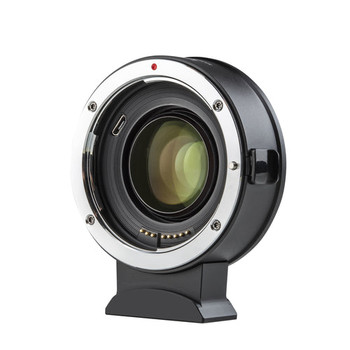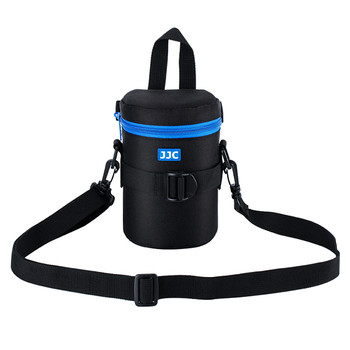Tamron
Tamron AF 18-250mm F3.5-6.3 Di II LD Aspherical (IF) Macro Lens for Nikon
- UPC:
- 0D5968F7
- Shipping:
- $50.00 (Fixed Shipping Cost)
Description
This breakthrough zoom covers the greatest range of any interchangeable lens in digital SLR photography—an astounding 14x wide-to-super telephoto ratio. That's the 35mm equivalent of a 28-400mm on an APS-C format DSLR. And it focuses down to 0.45m(17.7") over its entire range for dramatic close-ups. Remarkably compact and lightweight, its sharpness, resolution, and color accuracy are outstanding thanks to special lowe dispersion (LD) glass, high-tech molded aspherics, the latest multi-coating, and second-generation digital optimization (Di II). This is the most powerful zoom lens on the planet, and it literally puts the world at your fingertips, delivering crisp, flare free images of scenic vistas, sports, nature, and intimate close-ups of kids. It's the perfect all-in-one lens for traveling light and capturing the unanticipated.
AF 18-250mm F/3.5-6.3 Di II Highlights
Di II:
Lenses are designed for exclusive use on digital cameras with smaller-size imagers and inherit all of the benefits of our Di II products. These lenses are not designed for conventional cameras and digital cameras with image sensors larger than 24mm x 16mm.
14x Zoom
Capture your world with the longest-range zoom lens you can buy--experience the great power of a 14X zoom range with Tamron's 18-250mm--a single lens capable of shooting both wide angle and telephoto scenes. At nearly 14x, Tamron's lens is the world's most powerful zoom and delivers all the photographic freedom of this enormous zoom range in a single, compact lens.
 |
Low Dispersion (LD)
Low dispersion (LD) glass elements in a lens help reduce chromatic aberration; the tendency of light of different colors to come to different points of focus at the image plane. Chromatic aberration reduces the sharpness of an image, but glass with an extremely lowdispersion index, has less of a tendency to separate (defract) a ray of light into a rainbow of colors. This characteristic allows the lens designer to effectively compensate for chromatic aberration at the center of the field (on axis), a particular problem at long focal lengths (the telephoto end of the zoom range), and for lateral chromatic aberration (towards the edges of the field) that often occurs at short focal lengths (the wide-angle end of the zoom range.)
 |
Internal Focus (IF)
Internal focusing (IF) provides numerous practical benefits to photographers including a non-rotating front filter ring that facilitates the positioning of polarizing and graduated filters, and more predictable handling because the lens length does not change during focusing. Even more important, Tamron’s Internal Focusing (IF) system provides a much closer minimum focusing distance (MFD) throughout its entire focusing range. In addition, IF improves optical performance by minimizing illumination loss at the corners of the image field, and helps to suppress other aberrations that become more troublesome at different focusing positions.
Anomalous Dispersion (AD) for Better Color Correction
Anomalous dispersion (AD) glass is a special type of optical glass that is used to achieve more precise control of chromatic aberrations, thereby enhancing overall imaging performance. Glass of this type provides an abnormally large partial dispersion ratio (amount of diffraction) for light of specific wavelength ranges (colors) within the visible spectrum. By combining AD glass having these special characteristics with elements made of normal glass having different dispersion characteristics, it is possible to control the dispersion factors of a specific wavelength. This enhanced level of control results in much lower levels of on-axis (central) chromatic aberration for telephoto lenses (or zooms used at tele-photo settings) and a significant reduction of lateral (peripheral) chromatic aber-ration for wide-angle lenses (or zooms used at wide-angle settings.)
 |
Aspherical Elements (ASL) Provide the Ultimate in Image Quality and Compactness)
Tamron uses several hybrid aspherical lens elements in many lenses bearing the Aspherical designation. These innovative optics allow us to achieve the ultimate in image quality, and at the same time produce lenses that offer remarkable zoom ranges in extraordinarily compact packages. By perfecting theses cutting-edge advances for series production, Tamron has advanced the state of optical design, and virtually eliminated spherical aberration and image distortion from the high-power-zoom series.Through the effective application of Hybrid Aspherical Technology, one lens elemen tcan take the place of multiple elements without compromising performance. This is what allows us to produce remarkably compact long-range lenses that deliver a uniformly high level of image quality at all focal lengths and apertures.
 |
Zoom Lock
Another original Tamron mechanical engineering concept is the Zoom Lock (ZL), a simple convenience feature that prevents undesired extension of the lens barrel when carrying the camera/lens unit on a neck strap.
Package Includes:
1x Tamron AF 18-250mm F3.5-6.3 LD Aspherical (IF) Macro Lens for Nikon










